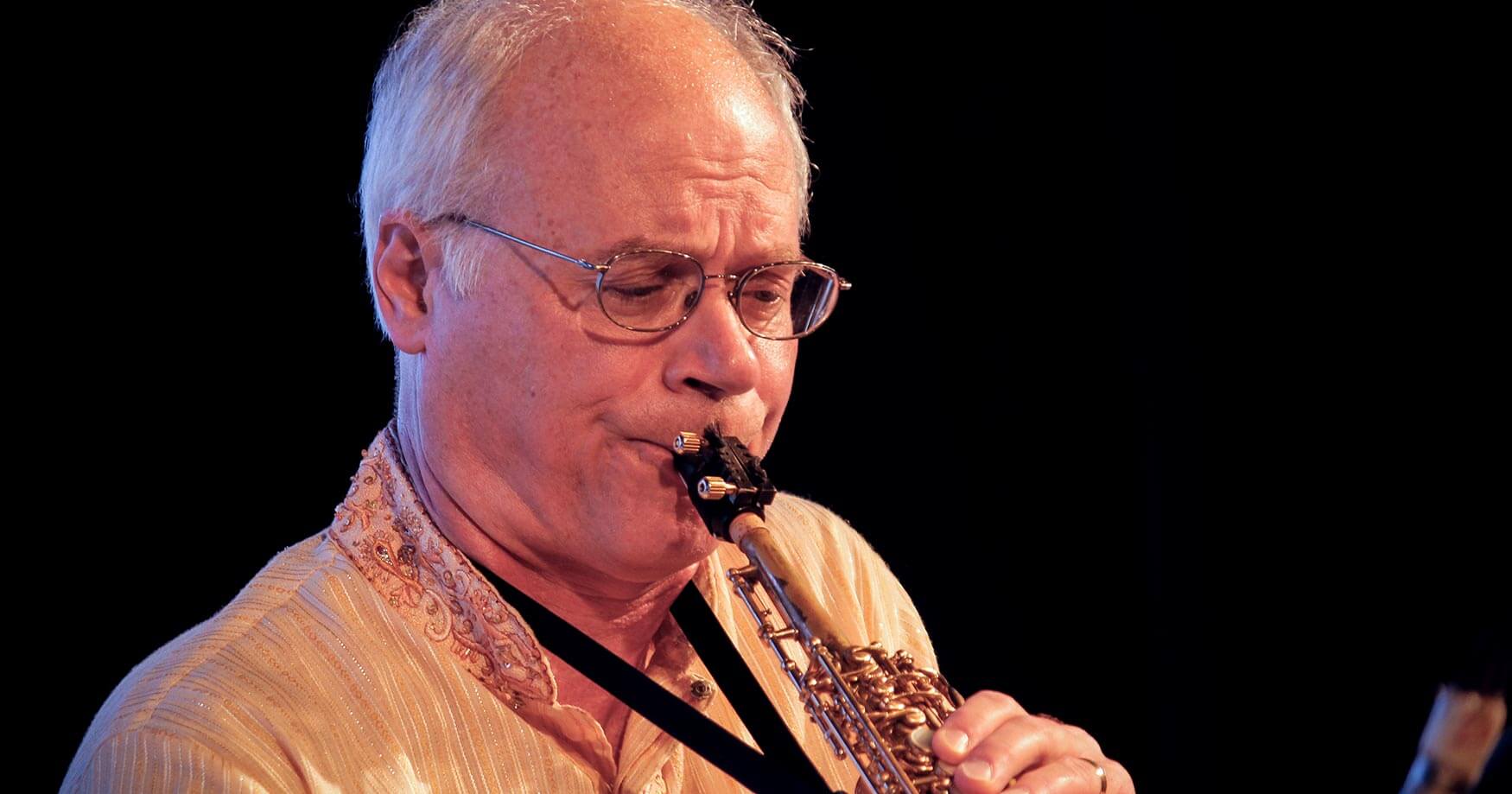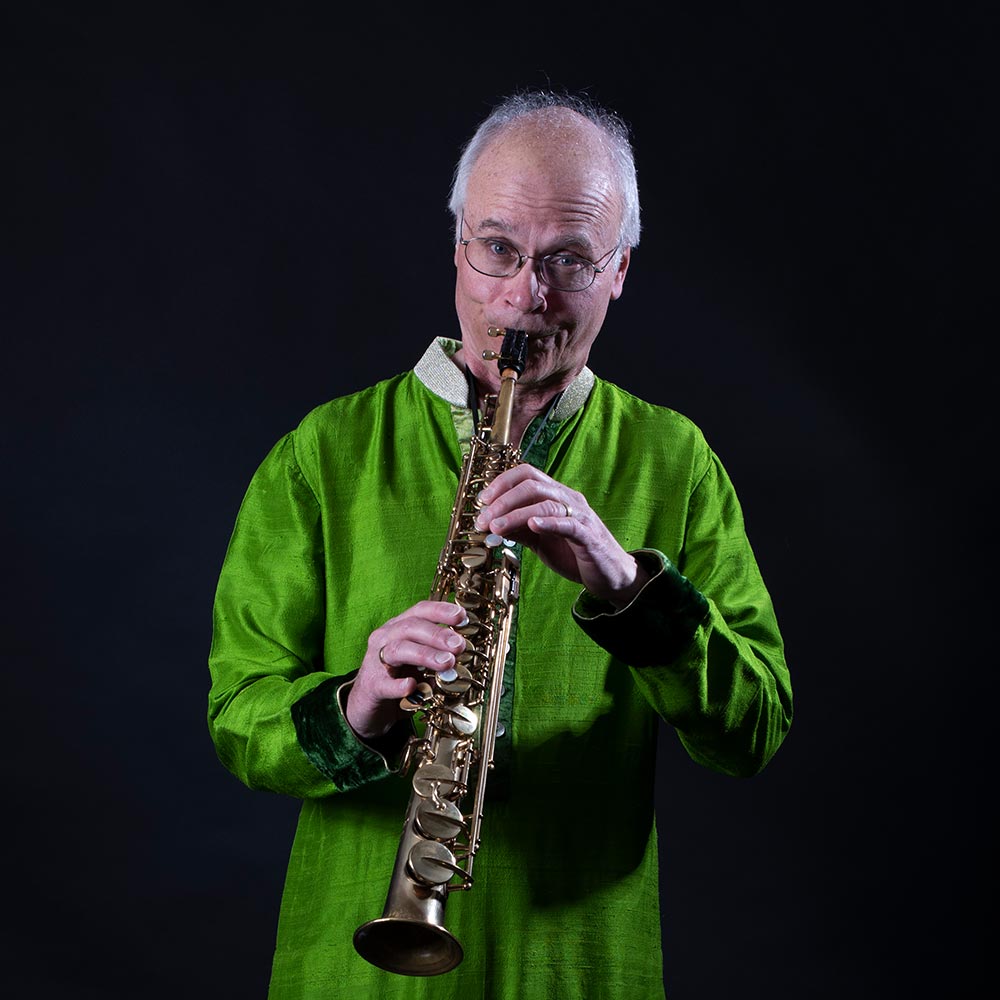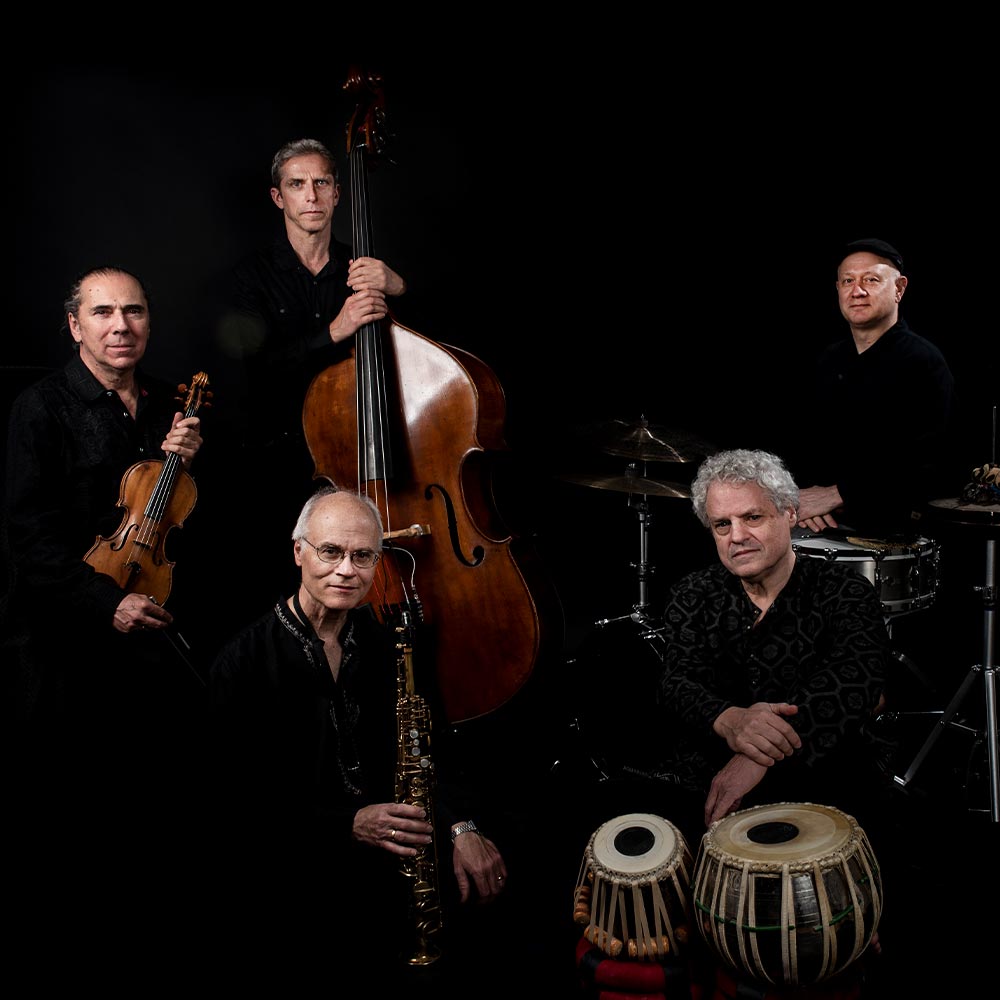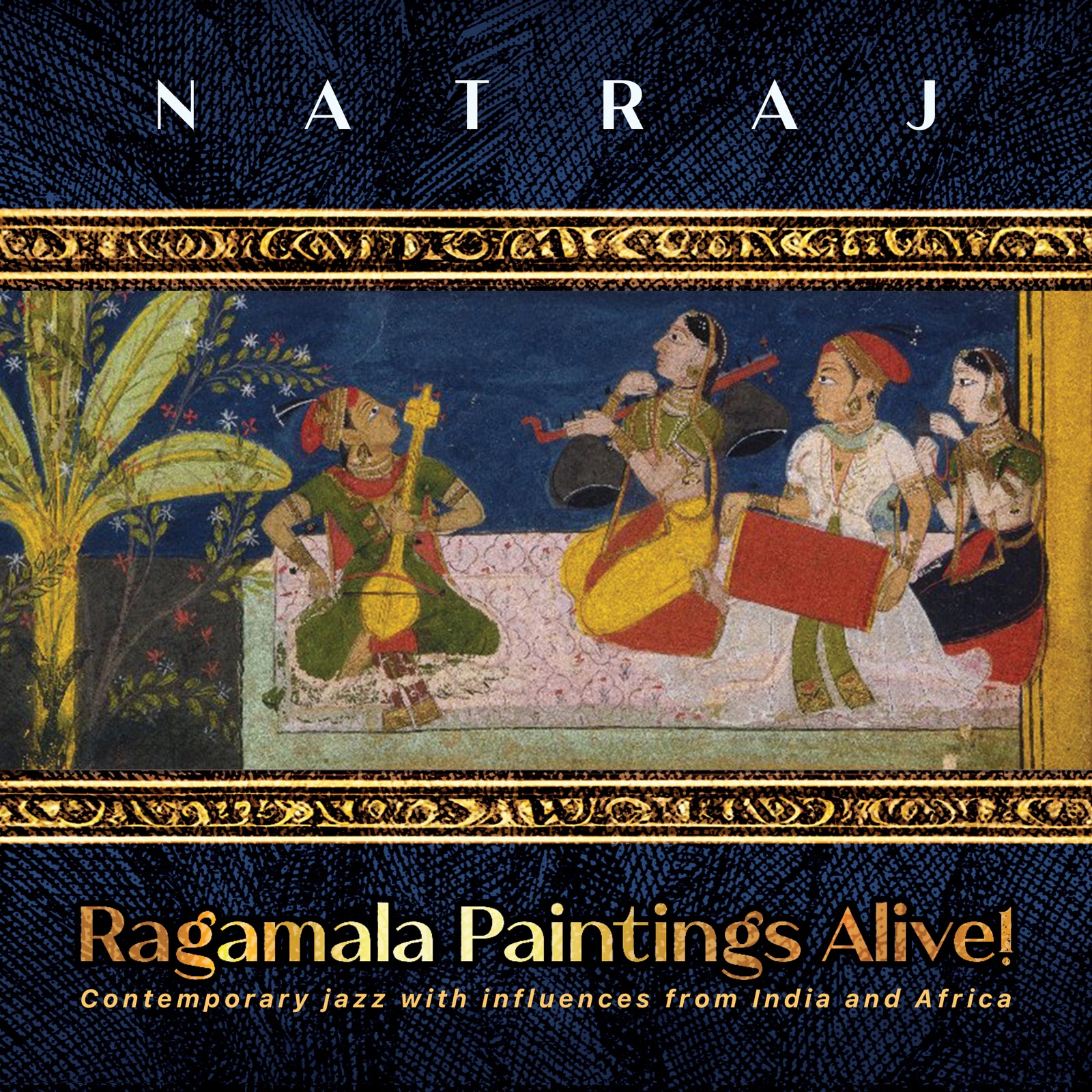
Composed by Phil Scarff and performed by world-jazz ensemble Natraj, RAGAMALA PAINTINGS ALIVE! shines a contemporary light on historic artwork from India. Natraj brings a wealth of experience exploring the intersection of jazz and global musical traditions. Their stunning performance is wide ranging, deep, and accessible, while firmly rooted in the rich tapestry of Indian classical music.
Today, Phil is our featured artist in “The Inside Story,” a blog series exploring the inner workings and personalities of our composers and performers. Read on to learn about his love for John Coltrane and Bismallah Khan, his wide-ranging history of artistic collaborations, and more…
Tell us about Natraj’s first performance in India.
Natraj performed at Rang Bhavan in Mumbai as part of the Jazz Yatra festival years ago. We had an audience of about 2,500. I was very concerned about how Natraj’s style of fusion of Indian classical music and jazz would be received in India. It seems that my concern was misplaced, because we indeed received an enthusiastic response from the audience, including selling a lot of CDs. We also got several overwhelmingly positive reviews in the press, including in the Times of India. It was quite a positive and validating experience for the band.
What recordings from your record library do you listen to the most?
The two artists that have the most representation in my music library are saxophonist John Coltrane and shehnai artist Bismillah Khan. I love all of their recordings. However, the ones I am most drawn to are Coltrane’s Interstellar Space and Bismillah Khan’s duets with sitarist Vilayat Khan.
How have Natraj’s influences evolved over the years?
We started with three primary influences — contemporary jazz, North Indian classical music, and the Agbekor tradition from southern Ghana and Togo. We have collaborated with many artists from India and West Africa over the decades. Through our collaborations with South Indian classical musicians and dancers, we have learned a lot about South Indian classical music, and that has also become a significant influence. I have co-composed quite a few pieces with South Indian percussionist T. K. Ramakrishnan. On RAGAMALA PAINTINGS ALIVE!, Bilawal Ragini and Vilaval Ragputra, Part 2 is based on a South Indian jathi or rhythmic pattern. We have also worked extensively with Abubakari Luna from northern Ghana, who was a Dagomba musician, and we now have quite a bit of Dagomba-influenced music in our repertoire. We tapped into this music in the second part of “Kanado Ragini” in RAGAMALA PAINTINGS ALIVE!. We have also collaborated quite a bit with Lamine Toure from Senegal and have a set of Senegalese-infused repertoire as well.
How do you prepare for a performance?
I try to relax right before a concert. I mentally review the forms of the pieces and also listen to shehnai icon Bismillah Khan’s recordings for inspiration.
What inspires you to write new compositions?
Many times I write new compositions or arrangements designed to feature a particular guest artist with whom Natraj will be performing. I generally hope to inspire the guest by creating pieces that provide a comfortable musical environment, but also push the guest a bit outside of his or her comfort zone.
What’s the greatest performance you’ve ever seen, and what made it special?
The most inspiring performance I recall is the Gundecha Brothers performing at the LearnQuest Festival in Boston. Their concert was electrifying from the very first note. The entire audience felt it. There was an extreme level of intensity and focus in their music. Pitch and very subtle manipulation of pitch were at the forefront. Even though contrapuntal improvisation is not a generally part of the Hindustani tradition, they had a very organic and intuitive sense of counterpoint when they improvised together.

Phil Scarff has pioneered the performance of North Indian classical (Hindustani) music on soprano saxophone, capturing the music's subtlety and depth. His performance at the famed Tansen Samaroh, Gwalior, India with Saskia Rao de Haas was "the highlight of the festival" (Dainik Bhaskar). He has made Indian classical appearances at India's Nehru Center, Bharatiya Vidya Bhavan, and Dadar-Matunga Cultural Centre (Mumbai); Saptak School of Music (Ahmedabad); Ramakrishna Mission Institute of Culture (Kolkata); ICCR Theater and India Habitat Centre (Delhi); JKK (Jaipur); and Pt Chatur Lal Festival (virtual).

Natraj melds the classical music of India, traditional music from West Africa, and contemporary jazz to create its own unique and infectious style. Hard-driving African grooves and graceful Indian ragas meet in the band’s expansive jazz conception. Selected as Boston’s Best Jazz Band by the Improper Bostonian and nominated Best World Music Act in the Boston Music Awards, Natraj captivates and excites audiences with exotic textures, accessible melodies, and rhythmic energy.

